
by admin | Oct 8, 2021 | Stem Cell Therapy, Exosomes, Parkinson's Disease, Stem Cell Research
Parkinson’s disease (PD) is a debilitating neurodegenerative disorder that currently affects nearly 6 million people worldwide and is currently the second most common neurological condition, behind only Alzheimer’s.
Although the exact cause of PD remains unclear, the condition is characterized by the gradual loss of nerve cells in the brain responsible for producing the neurotransmitter dopamine[1]. While no cure for PD currently exists, current therapeutic treatment approaches focus on improving quality of life but are not able to prevent or slow the progression of the disease.
Recent research has demonstrated positive effects of mesenchymal stem cell (MSC) transplantation that has been associated with secromes; noted beneficial effects include providing a self-regulated regenerative response that limits the area of lesions. Additionally, these MSC-derived secretomes compose soluble factors and encapsulated extravesicles (EV). These EVs have been found to have a significant impact on physiological processes, including cell-to-cell communication.
Considering MSCs are readily available and easily isolated from a number of sources, including adipose tissue, umbilical cord Wharton’s Jelly, bone marrow, and dental pulp, these stem cells are thought to hold potential as a therapeutic approach to managing PD.
As part of this review, d’Angelo et al. highlight a number of studies demonstrating the potential of MSCs in improving a number of conditions and symptoms consistent with those demonstrated in PD. In these studies, animal models demonstrate improved motor behaviors and correction of functional impairment after transplantation of MSCs.
The authors point out that further research exploring cell-free, therapeutic, personalized approaches for the different neurodegenerative diseases, including PD, is needed.
d’Angelo et al. also note that, while MSC-derived secretomes have shown positive effects on neuronal cell survival, differentiation, and proliferation, further studies are needed to fully understand all of the bioactive molecules.
Since MSC-derived secretomes are able to stimulate neurotrophic and neuronal survival pathways and appear to counteract neuronal death, they could potentially be a beneficial tool in future management and prevention efforts for a number of neurodegenerative conditions, including Parkinson’s disease, Alzheimer’s disease, and stroke.
Source:(2020, July 23). Insights into the Effects of Mesenchymal Stem Cell-Derived … – NCBI. Retrieved from https://www.ncbi.nlm.nih.gov/pmc/articles/PMC7432166/
[1] “Parkinsonfoundation.org -.” https://parkinsonfoundation.org/. Accessed 5 Oct. 2021.

by admin | Oct 1, 2021 | Stem Cell Therapy, Osteoarthritis, PRP, Stem Cell Research
With nearly 30 million people in the US affected by osteoarthritis (OA), the condition continues to be among the leading causes of chronic pain and disability. Considering that advances in medical technology have increased overall life expectancy, the number of people living longer and dealing with the effects of OA is expected to increase for the foreseeable future.
Although modern medicine has improved the way most diseases and chronic conditions are diagnosed and treated, OA treatment has not benefited from these advances. As a result, treatment and prevention of OA continue to focus primarily on controlling and minimizing symptoms associated with the condition, not treating or preventing the condition itself. Unfortunately, for many, when symptoms of OA progress to a point where the pain is no longer able to be managed, their options look to surgical replacement of the affected joint.
While there are many contributing factors related to the onset and progression of OA, including obesity, history of trauma, genetics, and heritable and acquired disorders, there also appears to be an association between the onset of OA and a depleted local population of mesenchymal stem cells (MSCs).
Considering the apparent relationship between OA and MSCs, Freitag et al. reviewed the reparative pathways, safety, and efficacy of MSC therapy in the treatment of osteoarthritis.
With their ease of harvest and ability to expand into chondrocytes, MSCs have continued to gain interest when exploring various stem cell therapies for the active management of pain and symptoms associated with OA.
Freitag et al. found that preclinical and clinical results of studies of cartilage repair techniques that utilize MSCs, including MSC scaffold transplantation techniques, MSC injectable techniques, MSC as a vehicle for platelet-rich plasma (PRP), and hyaluronic acid (HA) as an active carrier of MSCs, have all shown favorable results in supporting the benefits of MSC for the improvement of function and regeneration of new tissue in those afflicted with OA.
With over 400 active trials currently examining the efficacy of MSCs in the treatment of a variety of conditions, including OA, the safety of utilizing MSC therapy continues to draw interest from the medical community.
Although some early studies appeared to raise the question of abnormal cell growth, and ultimately the safety, associated with MSC therapy, the authors’ systematic review of clinical trials found that, while caution needs to be undertaken when culturing MSCs, the evidence demonstrates MSCs are generally safe for therapeutic use for the treatment of OA.
Freitag et al. conclude that the rapid progression of OA and related conditions demonstrate the need for therapies that repair and prevent these diseases, not just manage pain and related symptoms. As such, the authors feel MSC therapy offers a safe and viable option for the eventual treatment and prevention of OA and calls for further randomized controlled trials to evaluate the most effective applications of MSCs for managing osteoarthritis.
Source: (2016, May 26). Mesenchymal stem cell therapy in the treatment of osteoarthritis. Retrieved from https://bmcmusculoskeletdisord.biomedcentral.com/articles/10.1186/s12891-016-1085-9

by admin | Sep 3, 2021 | Stem Cell Therapy, Mesenchymal Stem Cells, Stem Cell Research
Human mesenchymal stem cells (hMSCs) are multipotent adult stem cells found in tissue throughout the body, including in the umbilical cord, bone marrow, and adipose tissue. Capable of self-renewing and differentiating into multiple tissues including bone, cartilage, muscle, fat cells, and connective tissue[1], MSCs appear to have a wide range of potential for use as therapeutic purposes for many serious health problems occurring throughout the body.
In this review, Rodriguez-Fuentes et al. examined currently registered (as of July 2020) clinical trials involving mesenchymal stem cells with the goal of analyzing the different applications of MSCs in a clinical setting to demonstrate the growing and broad potential of their therapeutic application relative to the reconstruction of damaged tissue.
As of July 2020, the authors identified 1,138 registered clinical trials (CTs) worldwide using MSCs to investigate their therapeutic potential. Therapeutic applications are a relatively new area of study, evidenced by the fact that only 19 CT studies were started between 1995 and 2005 and over 900 were initiated in the last ten years (2011-present). The majority of these CTs focused on the fields of traumatology, neurology, cardiology, and immunology. Interestingly, of the 1,138 CTs identified in this query, only 18 had published outcomes.
Examining the global distribution of registered CTs, it was observed that CTs are located in 51 countries, with China (228) and the US (186) leading the research.
As part of this review, and in addition to examining the number and geographic locations of registered CTs, the sourcing, isolation and treatment methods, and storage conditions of MSCs used in each clinical trial.
Most of the MSCs used for these CTs were obtained from cells of the iliac crest, placenta, and adipose tissue. All recovered cells underwent steps of purification and expansion prior to use in patients. Additionally, all methods used in these CTs were also found to follow good manufacturing practices (GMP).
Upon completing their review of registered CTs, Rodriguez-Fuentes et al. also observed that medical specialties for the most published studies included (in descending order) cardiology, traumatology, pneumology, neurology, hematology, ophthalmology, and plastic surgery. The most frequent pathologies addressed in these published CT studies included knee osteoarthritis, ischemic heart disease, and dilated cardiomyopathy. While the number of MSCs used varied by study, most utilized around 100 million MSCs.
The authors concluded that most studies analyzed as part of this review demonstrate positive outcomes with no serious adverse effects. While China and the US lead the world in the number of registered MSC clinical trials, the authors point out the fact that many of these CTs have multiple locations in different countries – indicating the importance of, and willingness to, collaborate internationally on this research.
Although most of the conditions for which clinical utility of MSCs have been published are conditions that do not currently have specific treatments with desirable or effective outcomes, there appears to be significant and broad potential for the clinical use of hMSCs without serious adverse events.
While there are currently at least 1,138 registered MSC CTs, there is still much to be examined and understood about MSCs. As such the continually increasing number of CTs including MSCs will help identify and demonstrate the therapeutic potential of these versatile stem cells.
[1] “Mesenchymal stem cells – Latest research and news | Nature.” https://www.nature.com/subjects/mesenchymal-stem-cells.
Source: Mesenchymal Stem Cells Current Clinical Applications. From https://www.sciencedirect.com/science/article/pii/S018844092030638X

by admin | Aug 6, 2021 | Stem Cell Therapy, Mesenchymal Stem Cells, Stem Cell Research
It is estimated that over 126 million Americans, or nearly one in two adults, are affected with some form of musculoskeletal disorder, condition, or injury – a number comparable to the percentage of the population currently living with a chronic lung or heart condition[1].
While there are a number of treatment modalities proven to be effective for treating musculoskeletal disorders, conditions, and injuries, using stem cells appears to be among the most explored promising potential option of these methods.
With mesenchymal stem cells (MSCs) being the preferred source of stem cell, mostly because of their abundance (including sources such as bone, tendon, skin, and blood) and ability to differentiate to many different tissues, orthopedic surgeons have focused largely on MSC therapies for healing a number of specific orthopedic conditions, including the healing of fractures, regenerating articular cartilage in degenerative joints, healing ligaments or tendon injuries, and replacing degenerative vertebral discs.
The goal of the comprehensive literature review conducted by Akpancar et al. was to evaluate the most recent progress in stem cell procedures and current indications in the orthopedic clinical care setting.
Specifically, as part of this review, the authors found that therapeutic applications using stem cells, and MSCs in particular, allow the stem cells to be used as progenitor cells as a way to enhance the healing and repair process. The authors point out that while many sources of stem cells have been considered for use in orthopedic procedures, including bone marrow-derived MSCs (BM-MSCs), adipose-derived stem cells (AD-MSCs), synovial tissue-derived stem cells (ST-MSCs), peripheral blood-derived progenitor cells, and bone marrow concentrate, the optimal source of stem cells has yet to be determined.
In addition, Akpancar et al. while reviewing the orthopedic indication of stem cells on various musculoskeletal disorders, conditions, and injuries, found that in large part, stem cell therapy demonstrated positive results in improved healing in a variety of orthopedic indications, including major orthopedic bone-joint injuries, osteoarthritis-cartilage defects, ligament-tendon injuries, as well as other conditions.
Despite these findings, the authors also point out that while there have been large amounts of preclinical studies conducted and there continues to be increasing interest in performing additional studies on human subjects, the current findings gathered from preclinical studies are still preliminary. Considering this, the authors recommend additional research be conducted to evaluate the safety and efficacy of stem cells therapy in orthopedic surgery.
Source: (2016, August 16). The Current Perspectives of Stem Cell Therapy in Orthopedic Surgery. Retrieved from https://www.ncbi.nlm.nih.gov/pmc/articles/PMC5253188/
[1] “One in two Americans have a musculoskeletal condition: New report ….” 1 Mar. 2016, https://www.sciencedaily.com/releases/2016/03/160301114116.htm.

by admin | Jul 30, 2021 | Stem Cell Research, Multiple Sclerosis, Stem Cell Therapy
Typically understood to support hematopoiesis and to produce the cells of the mesodermal lineage, mesenchymal stem cells (MSCs) found in bone marrow, fat, and other tissues of the body, have recently been found to contain additional properties that include immunomodulator and neurotrophic effects.
Considering earlier studies that have demonstrated favorable effects of MSC treatments in a variety of conditions – including stroke, multiple sclerosis, multi-system atrophy, and amyotrophic lateral sclerosis, Petrou et al. performed this double-blind study as a way to evaluate the best way of administration and the safety and clinical efficacy of MSC transplantation – specifically in patients with active and progressive multiple sclerosis.
The response of the 48 patients with progressive multiple sclerosis and with displaying evidence of either clinical worsening or activity during the previous year in this study were evaluated after being treated intrathecally (IT) or intravenously (IV) with autologous MSCs or with sham injections. Having identified a critical and unmet need for treatment, the goal of Petrou et al.’s study was to examine the therapeutic efficacy of MSC transplantation in this specific population.
Over the course of this controlled clinical trial, participants were randomly assigned to three treatment groups and treated (either intrathecally or intravenously) with autologous MSCs or with sham injections. At the 6-month mark, the authors of this study retreated half of the patients in both the MSC-IT and MSC-IV groups with MSCs, while the remaining participants were treated with sham injections. The same process occurred with patients initially treated with sham injections; meaning that at the 6-month mark, half were either treated with MSC-IT or MSC-IV.
Prior to the start of this study, Petrou et al. established a number of primary and secondary endpoints. Predetermined primary endpoints of this study included: the safety of the MSC-IV and MSC-IT treatments and the difference among the three groups in relation to performance on the Expanded Disability Status Scale (EDSS) at 6- and 12-month intervals. Predetermined secondary endpoints included the difference between the sham-treated and MSC-IT or MSC-IV treated group in the number of relapses and the relapse rate, the number of MRI gadolinium-enhancing lesions, the annualized rate of change in the T2 lesion load on MRI, percent brain volume change, performance on a series of physical and cognitive functions, and the retinal nerve fiber layer thickness.
At the conclusion of this 14-month trial, the authors reported that the study demonstrated positive results in all predetermined primary endpoints. More specifically, throughout the course of this study, the authors discovered that significantly fewer patients experienced treatment failure in the MSC0IT and MSC-IV groups compared with those in the sham-treated group. Additionally, over the course of the following year, nearly 59% and 41% of patients treated with MSC-IT and MSC-IV exhibited no evidence of multiple sclerosis activity; this is compared with less than 10% of patients in the sham-treated group.
Significant improvements of those receiving MSC-IT treatment (compared to sham treatment) were also observed in the following: ambulation index, the sum of functional scores, 25-foot timed walk test, 9-hole peg tests, PASAT and OWAT/KAVE cognitive tests, and newer biomarkers, including retinal nerve fiber layer and motor network. The authors also report beneficial, but less significant effects were observed in the MSC-IV groups.
Although the authors report a number of limitations associated with this study, including a small number of patients in each group, the short duration of the study, and the crossover design of the study (which could have resulted in a “carry-over” effect from the first cycle of treatment), they also conclude that the clinically significant findings observed in patients with progressive multiple sclerosis who were previously unresponsive to traditional or conventional therapies provide clear evidence of short-term efficacy and possible indications of neuroprotection induced by administration of autologous MSCs in patients with progressive multiple sclerosis.
In addition, the authors found that intrathecal administration of MSCs appears more beneficial than intravenous, as well as the potential benefits provided by receiving repeated injections of MSCs.
As such, Petrou et al. conclude by calling for a larger phase III study to confirm these findings and as a way to further evaluate the therapeutic potential of autologous MSCs in neuroinflammatory and neurodegenerative diseases, including active progressive multiple sclerosis.
Source: (2020, December 1). Beneficial effects of autologous mesenchymal stem cell … – PubMed. from https://pubmed.ncbi.nlm.nih.gov/33253391/

by admin | Jun 18, 2021 | Stem Cell Research, Glaucoma, Stem Cell Therapy
Characterized by vision loss caused by progressive damage to the optical nerve, glaucoma continues to be the second leading cause of blindness worldwide. Although painless, the glaucoma-induced cupping, thinning, and structural damage caused to various parts of the eye causes vision loss that starts in the periphery and gradually travels inward, eventually resulting in a total loss of vision.
Current treatments for glaucoma are mainly pharmacologic, laser-based, and surgical procedures that reduce the eye’s intraocular pressure (IOP), the most treatable risk factor of glaucoma. While these treatments have been demonstrated to be effective in treating the symptoms associated with glaucoma, they are not able to restore vision that has already been lost as a result of glaucoma.
The purpose of Chamiling et al.’s review is to evaluate the current developments surrounding the use and effectiveness of stem cell therapy, not only to treat the symptoms of glaucoma and other optic neuropathic conditions but also to explore the potential of restoring vision loss resulting from these conditions.
According to the authors, while most glaucoma-based therapies center around controlling IOP, they fail to address the main contributing factors associated with glaucoma-associated vision loss – which include axonal damage and loss of retinal ganglion cells (RGCs), the neurons that make up the optical nerve and that are responsible for transmitting visual images from the eye to the brain.
In their natural state, RGCs are what’s considered postmitotic; in other words, they are cells that do not regenerate. This means that any vision loss sustained as a result of the loss of these RGCs is permanent and unable to be reversed. Adding to the severity of early glaucoma is the fact that significant damage to, and loss of, RGCs typically occur before the first signs of developing visual issues are detected.
However, with the recent advancements in cell-based therapies, and considering the field’s rapid-developing understanding of ocular regeneration, there is hope that science will soon be able to advance options that not only treat glaucoma but also restore vision lost as a result of the condition. As such, Chamiling et al. focus this review primarily on the use of stem cell-derived RGCs for drug discovery and transplantation-based therapy in four specific areas: control of intraocular pressure; using pluripotent stem cells as a source of RGCs; stem cell-derived RGCs for transplantation and vision restoration; and using stem cell as a source for neurotrophic factors (NTF).
Through their review of the literature and, in part, a summary of advanced discussions held at the 2015 Ocular Research Symposia Foundation’s “Sight Restoration Through Stem Cell Therapy” meeting, the authors conclude that advancements in our understanding of stem cells combined with key advancements made in the field of ocular biology have resulted in the ability to differentiate human stem cells into a number of different ocular cell types.
While much of the research and trials examined has involved animal models of study, the progression of these efforts has led to a number of human trials exploring the differentiation of stem cells into retinal pigment epithelial cells. In addition, and more specifically related to glaucoma, recent studies demonstrate significant potential for the differentiation of stem cells into trabecular meshwork (TM) and RGCs as well as the opportunity to be used as a way to secrete NTFs.
As a result of this review, Chamling et al. call for continued study into the potential of human stem cells for the treatment of glaucoma while also concluding that the rapid advancement in stem cell technology continues to provide the pathway to further understanding of stem-cell applications in this field and to offer new hope for using cell-based therapies as a way to restore vision lost as a result of glaucoma or other optic nerve conditions.
Source: (2016, April 1). The Potential of Human Stem Cells for the Study … – PubMed – NIH, from https://pubmed.ncbi.nlm.nih.gov/27116666/
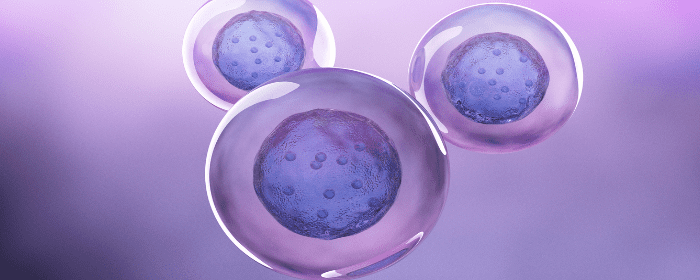

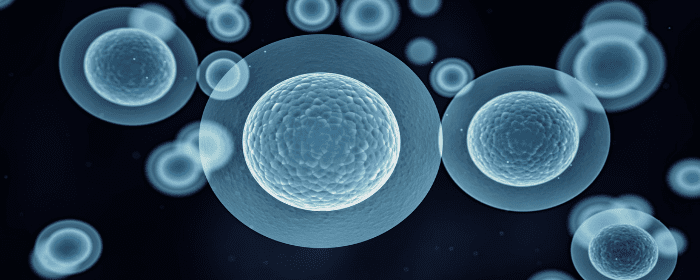
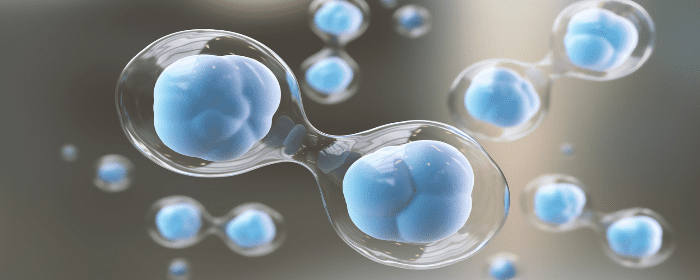
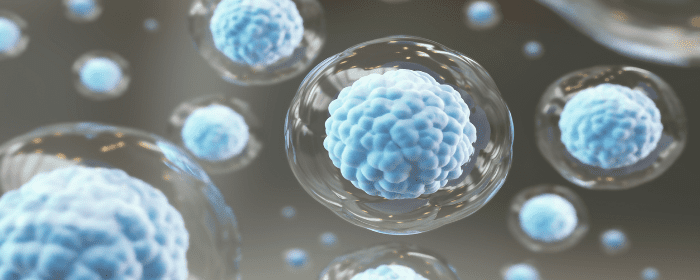
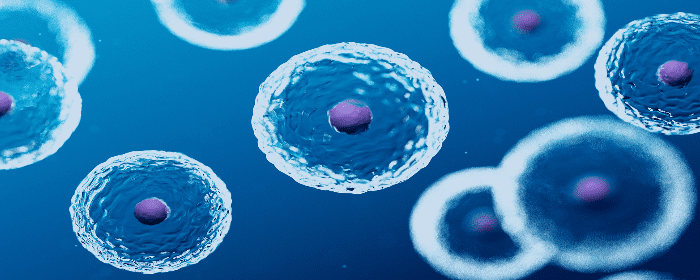
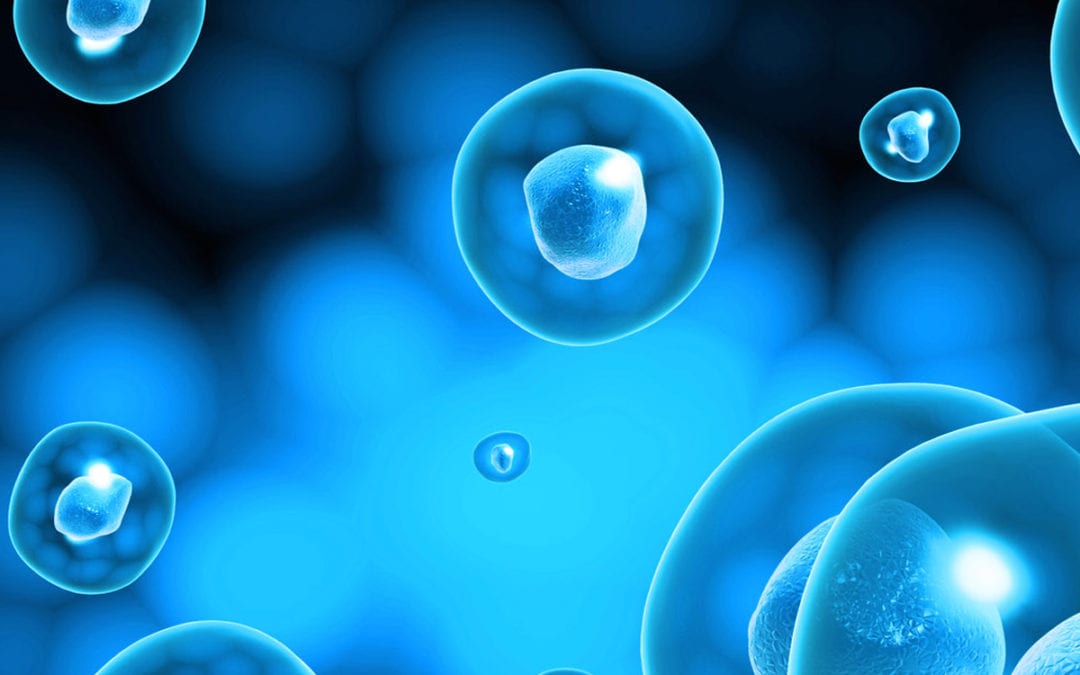
 St. Petersburg, Florida
St. Petersburg, Florida
